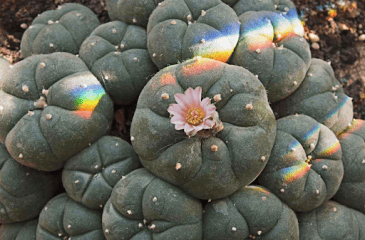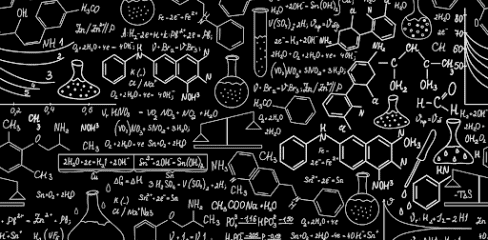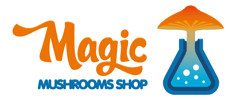Synthetic Psychedelics 101
Posted under: Latest News, News and Science

Synthetic psychedelic compounds are human-engineered substances designed to replicate the effects of naturally occurring psychedelics, such as psilocybin or mescaline. The development of these compounds emerged in the mid-20th century, driven by a desire to understand the neurological underpinnings of altered states. Notable figures like Alexander Shulgin played a pivotal role in synthesizing and exploring these compounds, introducing the world to an array of novel substances.
The effects of synthetic psychedelics span a wide spectrum, from visual and auditory alterations to profound shifts in perception, emotion, and cognition. Users often report enhanced introspection, increased empathy, and a heightened sense of interconnectedness with the universe. It's essential to note that experiences can vary widely based on factors such as dosage, set, and setting.
.
Synthetic vs Organic
.
The debate between synthetic and organic psychedelic compounds revolves around various factors, including their origins, chemical structures, effects, safety profiles, and legal status.
To better understand, we’ve listed some comparisons and arguments for both:
Organic Psychedelic Compounds (e.g., Psilocybin, DMT):
.

..
Natural Origin: Organic psychedelics are found in nature, often in plants and fungi. Many proponents argue that they have a long history of traditional use in various cultures and are considered sacred in some indigenous practices and therefore feel more comfortable with these substances because they are more natural.
Complex Interaction: The natural compounds in psychedelic plants and fungi often contain a mix of chemicals that may have synergistic effects. For example, psilocybin mushrooms also contain other compounds like psilocin, baeocystin, and norbaeocystin, which contribute to the overall experience.
Cultural and Spiritual Significance: Many organic psychedelics have been used in spiritual and religious ceremonies for centuries. Advocates argue that these substances have deep cultural roots and play a role in personal and communal growth.
Perceived Safety: Some proponents believe that natural psychedelics may be inherently safer because they have evolved alongside humans and may have a more harmonious interaction with the human body.
Less Legal Scrutiny: In some regions, natural psychedelic compounds may have a different legal status compared to their synthetic counterparts. For example, psilocybin-containing mushrooms are decriminalized or legally used for certain purposes in some places.
..

..
Synthetic Psychedelic Compounds:
..
Precision and Purity: Synthetic psychedelics can be produced with a high level of purity and precision, which allows for more controlled dosing and predictable effects. This can be appealing for research and therapeutic applications, however, this precision also demands a level of caution. Proper dosing and purity verification are paramount to ensure safe and beneficial experiences.
..
Novel Compounds: Synthetic psychedelics often introduce new chemical structures and novel effects. This allows for a wider range of exploration and potential therapeutic applications beyond what may naturally be occurring.
..
Research and Innovation: Synthetic psychedelics have been crucial in scientific research, allowing for controlled studies and a deeper understanding of their effects on the brain and psychology.
..
Consistency of Dosage: Synthetic compounds are generally produced in controlled laboratory settings, which can lead to more consistent dosages compared to naturally occurring substances.
..
Legal Status: In some cases, certain synthetic psychedelics may have a different legal status compared to their natural counterparts. For example, LSD is classified differently than psilocybin in many jurisdictions. The legal landscape surrounding synthetic psychedelics is complex and varies by jurisdiction.
..
Notable Synthetics
.

.
It's important to note that the legality and safety of these compounds can vary widely depending on your location. Many synthetic psychedelics are classified as controlled substances in many countries. Additionally, the effects and risks associated with these substances can differ greatly, so be wary of using them without proper knowledge and without being in a controlled, safe environment.
.
LSD (Lysergic acid diethylamide)
LSD is one of the most well-known synthetic psychedelics. It was first synthesized by Albert Hofmann in 1938 and it is a powerful hallucinogenic compound that alters perception, mood, and various cognitive processes.
.
MDMA (3,4-Methylenedioxymethamphetamine)
While not a classic psychedelic in the same sense as LSD or psilocybin, MDMA is sometimes classified as an empathogen-entactogen due to its unique effects. It enhances feelings of empathy and connectedness and is often associated with the club and rave scene.
.
2C Series
This is a family of synthetic psychedelics created by chemist Alexander Shulgin. They include compounds like 2C-B, 2C-E, and 2C-I. Each has its own distinct effects, with varying levels of visual distortion, euphoria, and altered perception.
.
NBOMe Series
Also known as "N-Bombs," these compounds (e.g., 25I-NBOMe, 25C-NBOMe) are derivatives of the 2C series but tend to be more potent and have a narrower safety margin. They are often sold on blotter paper, mimicking LSD.
.
DOx Series
These compounds (e.g., DOM, DOI, DOC) are amphetamine derivatives with psychedelic effects. They tend to have a longer duration of action compared to classic psychedelics like LSD or psilocybin.
.
AL-LAD and ETH-LAD
These are analogs of LSD with similar effects but potentially different nuances in terms of duration and subjective experience.
DMT Analogs.
Various synthetic compounds have been developed to mimic the effects of DMT. Examples include 5-MeO-DMT and 4-AcO-DMT.
.
Conclusion
.
Ultimately, the choice between synthetic and organic psychedelics comes down to personal preference, legal considerations, and the specific goals of the user (e.g., recreational use, spiritual exploration, therapeutic applications). It's crucial to approach any psychedelic substance with caution, respect, and a thorough understanding of the potential risks and benefits.
...
Note: If you’re suffering from a mental illness and are curious about using psilocybin or any other psychedelic therapy, please consult one of the relevant medical authorities first. Do not self-prescribe, it’s vital to have the right support and guidance when using psychedelics as medicine.


November 17, 2023